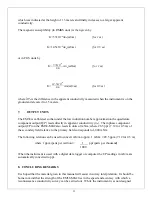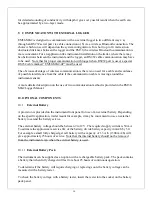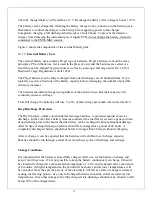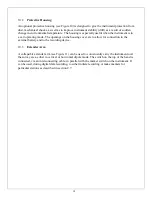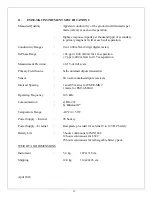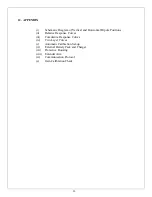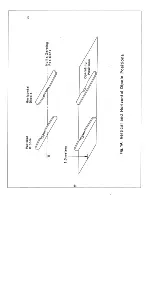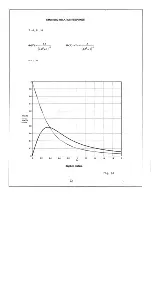
7
2.3
Instrument Zero
This adjustment should be carried out at the beginning of each day at the first survey station and
should be checked thereafter two times a day or more often when making measurements over
ground of low conductivity. As referred to earlier, this adjustment is used to accurately set the
instrument zero so that if the unit were taken to a great height above the earth (so as to no longer
respond to terrain conductivity) it would actually read zero. As with all measurements, it is
carried out with the long axis of the instrument horizontal as shown in Fig. 1.
The Mode switch is now in the 1 m position. Lift the instrument to a height of approximately 1.5
meters (5 feet) above the ground. The exact height is not critical but this height should be
reasonably accurately maintained (± 5 cm or 2 inches) throughout the zeroing procedure. With
the instrument in the horizontal dipole mode of operation (Fig.1) adjust the Q/P Zero control so
that the Q/P meter reads approximately 50 mS/m. Note the meter reading in mS/m which we
shall call H. Now without changing the instrument height, rotate the instrument about the long
axis to the vertical dipole mode (Fig. 1) and once again read the Q/P meter. Note the new
reading which we shall call V. Now it can be shown that, regardless of any layering in the earth,
with the instrument at a height of 1.5 meters V should equal twice H; conversely if V is not equal
to twice H we know that the zero is incorrectly set.
We can alter the instrument zero arbitrarily by adjusting the Q/P Zero Control. However we
know that we must adjust this control by an amount such that when we repeat the vertical and
horizontal dipole measurements after the adjustment (again at 1.5 meters) the new Q/P meter
readings, which we shall call V
and H
, must satisfy V
=2H
. Let C be the amount by which we
alter the meter reading by adjusting the Q/P zero Control. How much should C be? If V and H
are the readings before the adjustment and V
and H
are the readings after, then, since the
correction C affects both V and H equally, V
=V+C and H
=H+C. But C has been chosen so that
V
=2H
and therefore
V
H
V
C
H
C
'
'
2
which can be re-arranged to give C as
Thus having obtained V and H, the initial meter readings in the vertical and horizontal dipole
modes respectively, to set the zero correctly we first calculate C=V-2H, and then with the
instrument in either position we adjust the Q/P Zero Control so as to alter the meter reading by
the amount C (in the direction of higher conductivity if C is positive, lower conductivity if C is
negative). Repeating the vertical and horizontal dipole measurements should now give V =2H
and the zero is correctly set.
C = V-2H
Содержание EM38-MK2
Страница 7: ...5 Fig A...
Страница 23: ......
Страница 24: ......
Страница 25: ......
Страница 26: ......
Страница 27: ......
Страница 28: ......
Страница 29: ......
Страница 30: ......
Страница 31: ......
Страница 32: ......
Страница 33: ......
Страница 34: ......
Страница 35: ......
Страница 36: ...34...
Страница 37: ...35...
Страница 38: ...36...
Страница 39: ...37...
Страница 44: ...42...

















